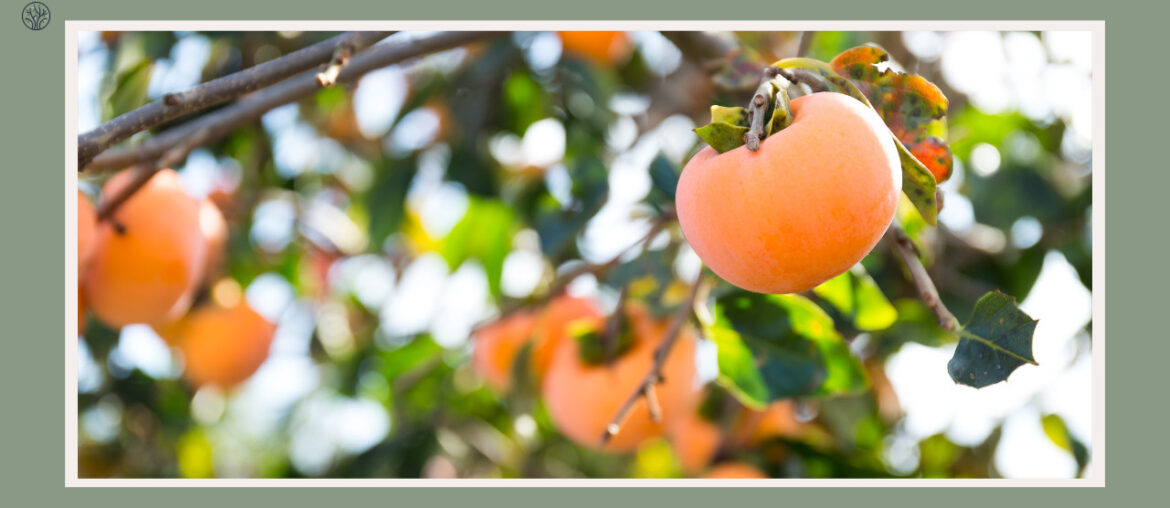Persimmon trees are a sight to behold, with their checkered bark, vibrant leaves, and luscious fruit. As autumn’s emblem, they transform landscapes with their rich colors and promises of a sweet harvest.
In this blog, we’ll explore the persimmon tree, from its unique characteristics to its historical significance. Dive in to discover the beauty and wonders of this remarkable tree.
Characteristics of a Persimmon Tree
Persimmon trees, native to Asia, have been cherished for centuries not just for their delicious fruit but also for their aesthetic appeal. Each part of the tree tells a story, revealing its age, health, and the season it’s in.
The Bark
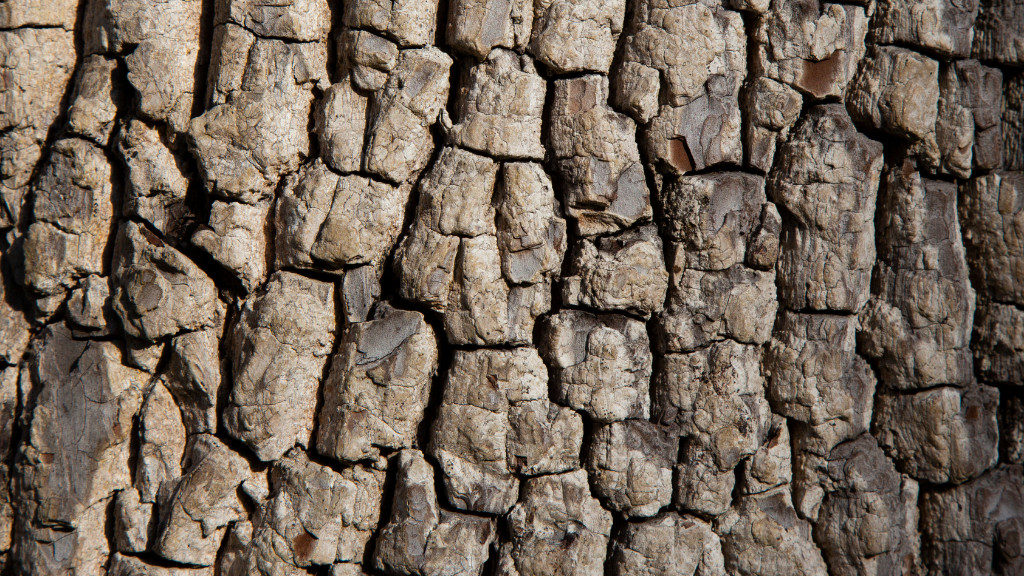
The bark of a persimmon tree is one of its most distinctive features. When you run your fingers across it, you’ll feel a rough, rugged texture, reminiscent of old, weathered wood. This texture becomes more pronounced as the tree ages, giving it a wise, ancient appearance.
Color variations: The bark isn’t just a single shade of brown. Instead, it has a palette of colors, ranging from light grayish-brown in younger trees to a deeper, almost charcoal hue in older specimens. These color variations often appear in block-like patterns, creating a mosaic that’s both intriguing and beautiful.
Unique features: One of the most captivating aspects of the persimmon tree’s bark is the way it peels. Over time, especially in mature trees, the bark begins to exfoliate in vertical strips like trees that have smooth bark. This peeling reveals the lighter, newer bark underneath, creating a contrast that’s visually striking. This natural exfoliation process not only adds character to the tree but also aids in its growth and health.
The Fruit
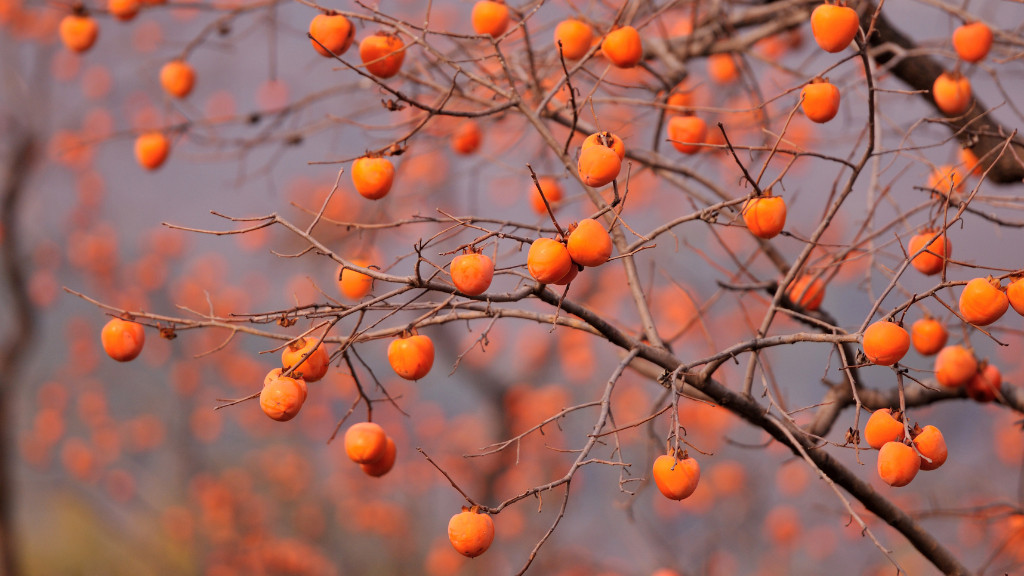
Persimmon fruits are a delightful blend of taste, texture, and nutrition.
Texture and taste: When ripe, the fruit offers a soft, jelly-like texture that melts in the mouth. Its taste is a harmonious blend of honeyed sweetness with a hint of tartness, making it a favorite for many. However, it’s essential to ensure the fruit is fully ripe before consuming, as unripe persimmons can have an astringent taste due to the presence of tannins.
Color variations: Starting as a light green when young, it gradually turns to a vibrant orange or reddish-orange when ripe. This transformation not only indicates the fruit’s readiness for consumption but also adds a splash of color to gardens and orchards in the fall.
Nutritional content and health benefits: Persimmons are more than just a treat for the taste buds. They’re packed with vitamins, notably vitamins A and C, and are a good source of dietary fiber. These fruits also contain antioxidants, which help combat oxidative stress in the body. Regular consumption can support heart health, reduce inflammation, and even aid in digestion.
The Leaves and Flowers
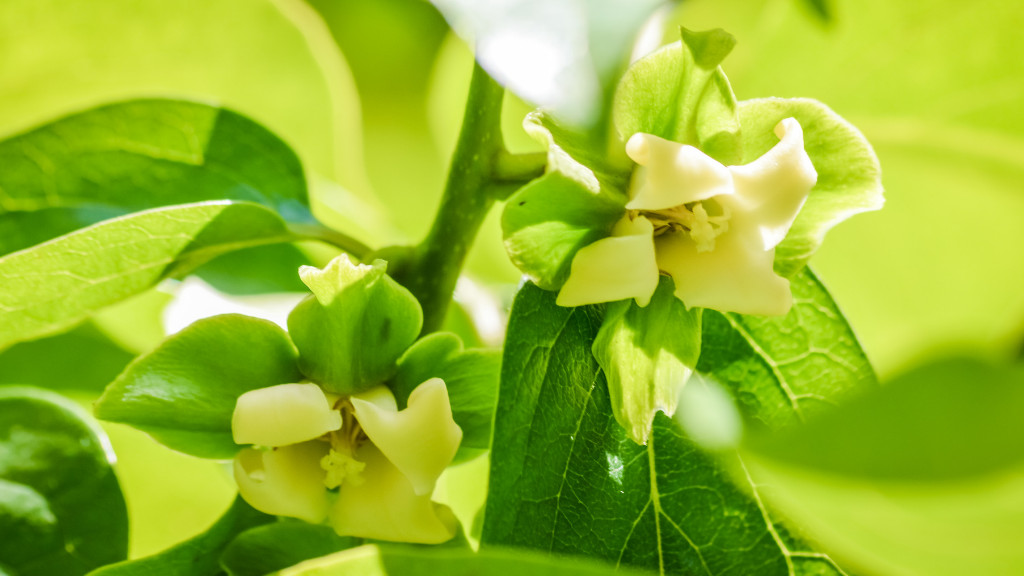
Although they do not have unique heart-shaped leaves or vibrant color leaves, the persimmon tree still has its own kind of beauty.
Leaves: Throughout spring and summer, the tree is adorned with broad, ovate leaves that have a glossy finish. These leaves are a deep green, providing a lush canopy. As autumn approaches, they undergo a transformation, turning shades of fiery red and gold, making the tree a focal point in any landscape.
Flowers: In late spring, before the full flourish of its leaves, the persimmon tree showcases small, inconspicuous flowers. These flowers, often yellow-green, are bell-shaped and hang delicately from the branches. While they might not be as showy as catkins on cottonwood trees, they play a crucial role in the tree’s fruiting process, setting the stage for the delicious persimmons that follow.
Historical Context of Persimmon Trees
The persimmon tree, with its luscious fruit and vibrant foliage, has roots that delve deep into the annals of history.
Origin: The persimmon tree, scientifically known as Diospyros, has its origins in China. Ancient Chinese literature, dating back more than 2000 years, has references to this delightful fruit, indicating its long-standing presence and importance in the region. The name “persimmon” itself is derived from the Native American word “pasiminan,” which translates to “dry fruit,” a nod to the fruit’s often dried form.
Spread: From its native lands in China, the persimmon tree began its journey across continents. By the 7th century, it had made its way to Japan, where it became an integral part of the culture and cuisine. The tree’s popularity didn’t stop there. By the 18th century, persimmon trees were introduced to the United States, primarily through trade routes. The adaptable nature of the tree meant it could flourish in various climates, leading to its widespread cultivation in different parts of the world.
Historical significance: The persimmon tree holds more than just agricultural value; it’s steeped in cultural and historical significance. In East Asian cultures, particularly in China and Korea, the persimmon fruit symbolizes transformation and enlightenment, often associated with the changing seasons.
In Japan, dried persimmons, known as “hoshigaki,” are considered a delicacy and are a traditional gift during the New Year. The Native Americans, too, recognized the value of this fruit, using it as a primary ingredient in traditional dishes and even medicines.
Varieties of Persimmon Trees
Persimmon trees, with their rich history and widespread cultivation, have given rise to several distinct varieties. Each type has its unique characteristics, making them favorites in different regions.
American Persimmon
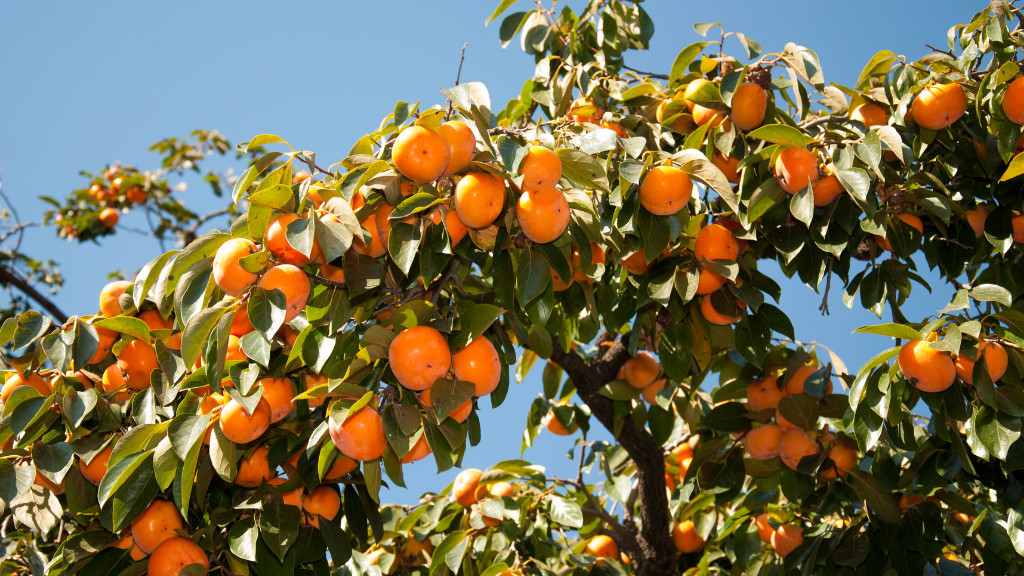
Characteristics: The American persimmon is native to the eastern United States. It produces smaller fruits compared to its Asian counterparts, usually about 1 to 2 inches in diameter. These fruits have a rich, honey-like flavor when fully ripe but can be astringent if consumed prematurely.
Regions: Predominantly found in the eastern and southeastern parts of the U.S., from Connecticut to Florida and west to Texas.
Japanese Persimmon
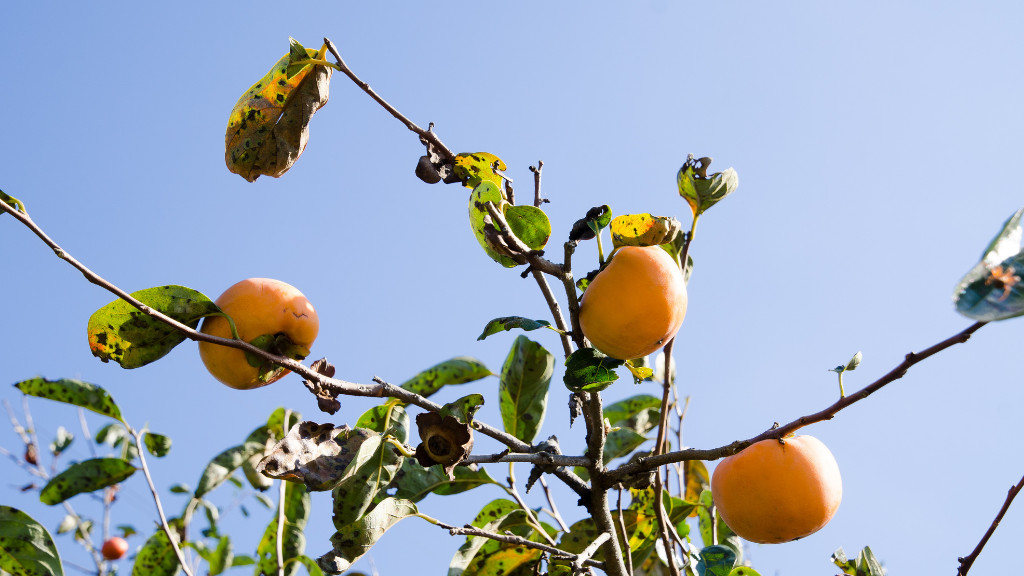
Characteristics: This variety is perhaps the most well-known globally, producing larger fruits that can be up to 4 inches in diameter. There are many cultivars of the Japanese persimmon, with varying levels of astringency. Some popular ones include ‘Fuyu’ and ‘Hachiya’.
Regions: Originally from China, it’s now widely cultivated in Japan, Korea, and other parts of Asia. It’s also grown in Mediterranean climates, including parts of California.
Black Sapote
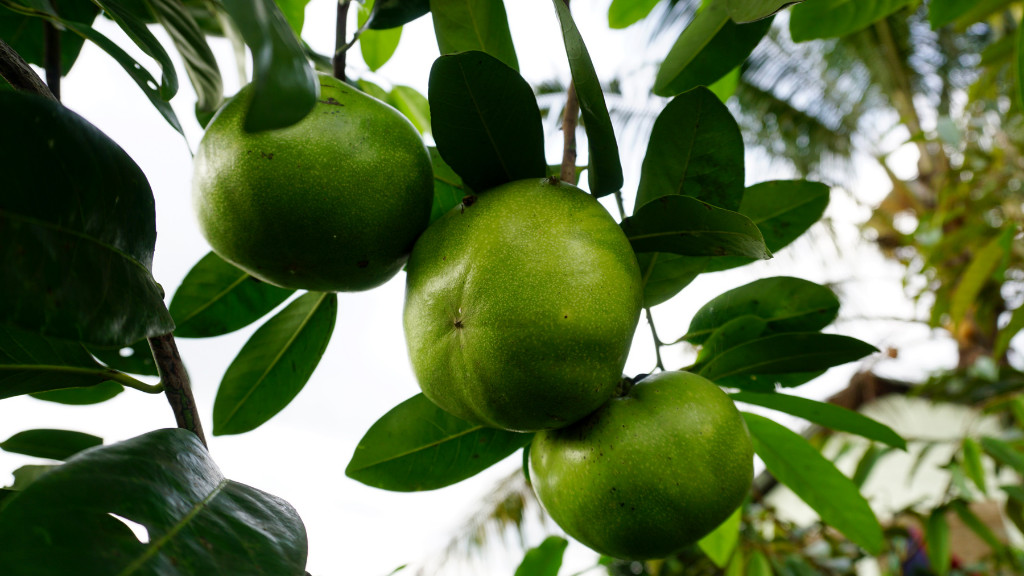
Characteristics: Often referred to as the “chocolate pudding fruit,” the Black Sapote is a type of persimmon native to Mexico. Its fruit has a smooth texture and a flavor reminiscent of chocolate, making it a favorite for desserts.
Regions: Predominantly found in Central America, but its delightful taste has led to its cultivation in other tropical regions.
These are just a few of the many persimmon varieties cultivated worldwide. Each brings its unique flavor, texture, and history, contributing to the rich tapestry of the persimmon tree’s global legacy.
Comparison with Other Trees
Persimmon trees hold a unique place in the arboreal world, offering distinct characteristics that set them apart from their counterparts. Let’s explore how they compare with other similar trees.
Apple Trees
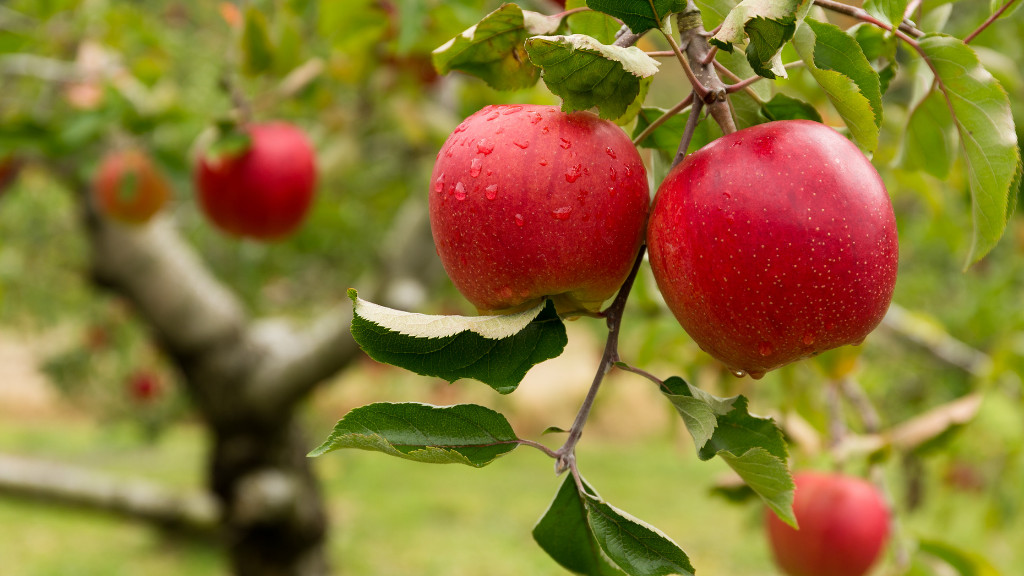
Similarities: Both persimmon and apple trees are deciduous, bearing fruit that is enjoyed worldwide. They share a similar stature and are often found in orchards and home gardens. Unique
Differences: Persimmon fruits are typically less tart than apples and can have a more complex flavor profile. The texture of ripe persimmons can range from firm to pudding-like, which is quite different from the crispness of most apples.
Peach Trees
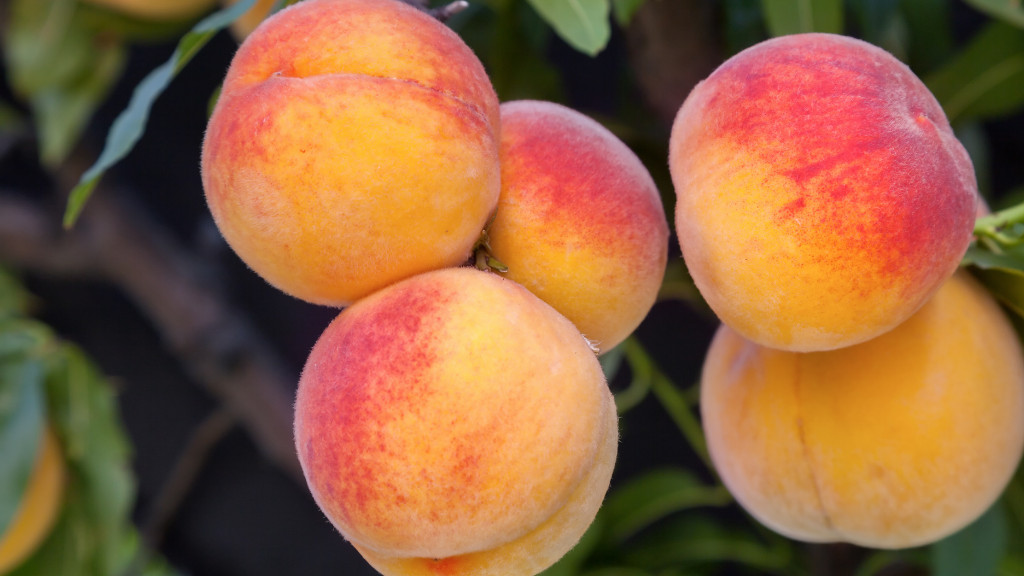
Similarities: Peach and persimmon trees are both valued for their sweet, juicy fruits and have been cultivated for thousands of years.
Differences: Unlike peaches, persimmons can be astringent if eaten before they’re fully ripe. Persimmon trees are also more cold-hardy than peach trees, making them suitable for a wider range of climates.
Plum Trees
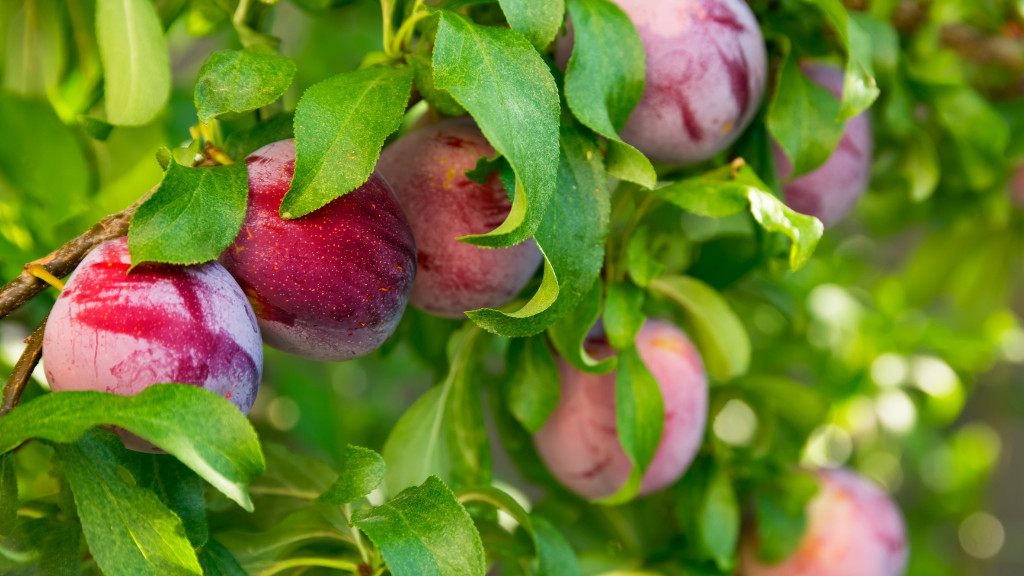
Similarities: Plums and persimmons are both stone fruits with a wide variety of cultivars and flavors.
Differences: Persimmon trees, especially the American variety, can tolerate much poorer soil conditions than plum trees. Additionally, persimmons have a longer shelf life once harvested, extending their availability throughout the season.
In comparison, persimmon trees offer a unique blend of resilience, versatility, and a distinctive fruit profile that sets them apart from these other common fruit-bearing trees.
Uses Of Persimmon Trees
Persimmon trees, while primarily known for their succulent fruits, have more to offer than just their delicious produce. Beyond the culinary delights, the wood of the persimmon tree has its own set of unique applications.
Culinary Uses
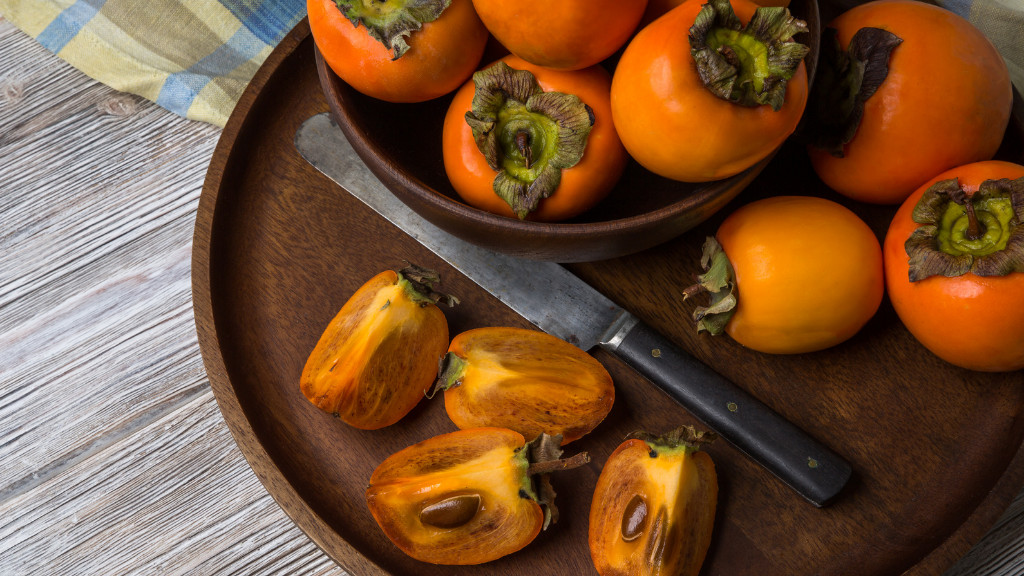
Simple Persimmon Recipes
Salad: A refreshing persimmon salad can be the star of any meal. Slice ripe persimmons and toss them with mixed greens, toasted walnuts, crumbled feta cheese, and a light vinaigrette dressing. The sweetness of the persimmons complements the tangy feta and crunchy walnuts, creating a balanced and flavorful dish.
Smoothie: For a nutritious start to your day, blend ripe persimmons with Greek yogurt, a splash of almond milk, a drizzle of honey, and a pinch of cinnamon. This smoothie is not only delicious but also packed with vitamins and minerals.
Dessert: Persimmon pudding is a classic treat. Puree ripe persimmons and mix with sugar, eggs, flour, cinnamon, and nutmeg. Pour the batter into a baking dish and bake until set. Serve warm with a dollop of whipped cream or a scoop of vanilla ice cream.
Health Benefits of Consuming Persimmons
Nutritional Content: Persimmons are a powerhouse of nutrition. They are rich in vitamins A, C, and E, and also contain essential minerals like potassium, magnesium, and phosphorus. Furthermore, they are a good source of dietary fiber, which aids in digestion.
Overall Well-being Benefits: Regular consumption of persimmons can offer numerous health benefits. The antioxidants present in persimmons help combat oxidative stress and reduce the risk of chronic diseases. The fruit’s high fiber content promotes digestive health and can aid in weight management. Additionally, the potassium in persimmons helps regulate blood pressure, supporting heart health.
Wood Uses
Persimmon wood is dense, hard, and has a fine grain, making it highly desirable for various applications. One of the most notable uses of persimmon wood is in the crafting of golf club heads, especially for putters. Its hardness ensures durability, while the fine grain gives the clubs a polished, elegant appearance.
Additionally, persimmon wood is often used in woodworking for making intricate carvings, ornamental objects, and even musical instruments. Its rich, reddish-brown hue, combined with its strength, makes it a preferred choice for artisans and craftsmen.
Growth and Habitat of Persimmon Trees
Persimmon trees, with their adaptability and resilience, have made their mark in various landscapes across the globe. Their growth and habitat preferences offer insights into their versatility and the environments in which they thrive best.
Natural Habitats
Persimmon trees, native to China, have spread across various parts of the world, including Asia, North America, and the Mediterranean. In the wild, they often flourish in sunny, well-drained areas such as forest edges, clearings, and along riverbanks. These trees have a penchant for locations that receive ample sunlight, ensuring their fruits ripen to perfection. Over time, as they were cultivated and domesticated, persimmons found their way into orchards and backyard gardens, further expanding their reach.
Soil and Climate Adaptability
One of the remarkable traits of persimmon trees is their adaptability to different soil types. While they prefer deep, loamy soils, they can also thrive in sandy or clayey grounds, provided they are well-draining. Proper drainage is crucial to prevent root rot and other diseases. As for climate, persimmons are hardy trees. They can withstand cold temperatures, with some varieties being cold-hardy down to USDA zone 6. However, they also flourish in warmer climates, making them versatile in various geographical regions. Regular watering during dry spells and ensuring they receive adequate sunlight will keep these trees in optimal health.
Care And Maintenance Of Persimmon Trees
Persimmon trees, with their vibrant fruits and lush foliage, are a delightful addition to any garden. However, to ensure they thrive and produce bountiful harvests, certain care and maintenance practices are essential.
Growing Conditions
Persimmon trees thrive in full sunlight, requiring at least six hours of direct sun daily. While they’re adaptable to various soil types, well-draining soil is crucial. Regular watering, especially during dry periods, ensures steady growth. However, it’s essential to avoid waterlogging, which can lead to root rot. A balanced fertilizer applied in the early spring can boost growth and fruit production.
Pests and Diseases
While persimmons are relatively hardy, they’re not immune to pests and diseases. Common pests include mealybugs, scale, and fruit flies. Unlike trees that naturally have black leaves, black leaves on persimmon trees are a warning sign that should be further inspected.
As for diseases, persimmons can be susceptible to leaf spot, anthracnose, and crown gall. Proper spacing, ensuring good air circulation, and avoiding overhead watering can prevent many of these issues.
Harvesting and Eating
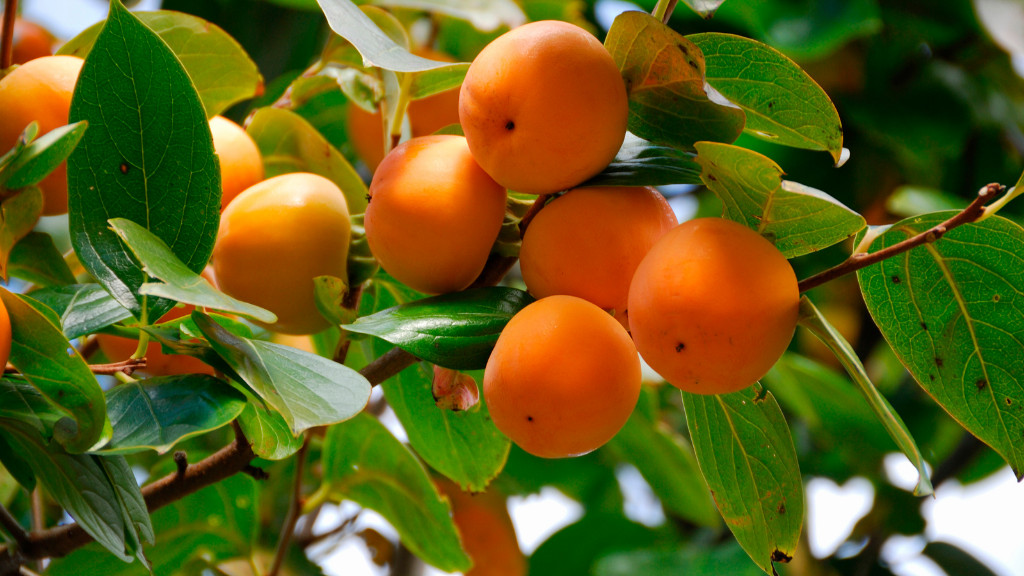
Persimmons are ready for harvest when they achieve a deep orange hue and slightly soft texture. It’s essential to handle them gently to prevent bruising. Once harvested, they can be eaten fresh, dried, or used in various culinary delights. Remember, some varieties are astringent when unripe and should be consumed only when fully soft. Non-astringent varieties can be enjoyed while still firm.
FAQs
Can you eat persimmon trees?
While the fruit of the persimmon tree is edible and highly sought after, the tree itself is not consumed. The leaves, bark, and wood of the persimmon tree are not edible. It’s essential to ensure that the persimmon fruit is ripe before consumption, as unripe persimmons can be astringent and may cause discomfort.
What does a wild persimmon tree look like?
Wild persimmons are typically smaller than their cultivated counterparts. They are usually round and measure about 1 ½ to 2 inches in diameter. The color of wild persimmons can range from pinkish-orange to a deep reddish-orange, often with a frosty sheen. The skin is smooth, and the fruit is capped with a leafy green calyx. It’s worth noting that wild persimmons can be quite astringent until they are fully ripe, at which point they become sweet and soft.
What does a persimmon tree look like inside?
Inside, a ripe persimmon fruit has a soft, jelly-like consistency with a vibrant orange hue. Depending on the variety, the fruit may contain seeds or be seedless. The seeds, when present, are brown, flat, and oval-shaped. The inner pulp is sweet, with a honeyed flavor that is unique to persimmons. As for the tree’s internal structure, like other trees, the persimmon tree has growth rings, xylem, and phloem, which facilitate the transport of water and nutrients.
Where do persimmon trees grow?
The common persimmon, Diospyros virginiana, is native to the eastern United States, spanning from southern New England to Florida and extending westward to Kansas and Texas. On the other hand, Oriental persimmons, Diospyros kaki, originate from Asia, particularly China, Korea, and Japan.
In terms of hardiness zones, American persimmons thrive in USDA zones 4 through 9, while Oriental persimmons prefer slightly warmer climates, growing best in USDA zones 7 through 10. With the right conditions, persimmon trees have also been cultivated in other parts of the world, including parts of Europe and New Zealand.
What does a persimmon tree look like in the fall?
In the fall, the persimmon tree is a spectacle of vibrant colors. Its leaves, which are bluish-green during the growing season, undergo a dramatic transformation. They turn into brilliant shades of yellow, orange, scarlet, or reddish-purple, creating a mesmerizing canopy that stands out in any landscape. This autumnal display, combined with the bright orange or reddish fruit hanging from the branches, makes the persimmon tree a visual delight during this season.
What does a persimmon taste like?
The taste of persimmon is unique and often described as a blend of honey, dates, and apricot with a hint of citrus. When fully ripe, the fruit is incredibly sweet with a soft, almost custard-like texture.
However, it’s essential to note that there are astringent and non-astringent varieties of persimmons. Astringent persimmons, if eaten before they are fully ripe, can have a puckering effect due to the presence of tannins. Once fully ripe, they lose their astringency and become sweet. Non-astringent varieties, on the other hand, can be eaten while still firm without any astringent taste.

